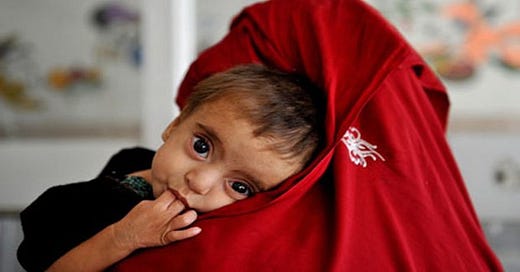Welcome to the Brown History Newsletter. If you’re enjoying this labor of love, please do consider becoming a paid subscriber. Your contribution would help pay the writers and illustrators and support this weekly publication. If you like to submit a writing piece, please send me a pitch by email at brownhistory1947@gmail.com.
Don’t forget to check out our SHOP and our Podcast.

Why Are Nearly Half of Children in Pakistan Stunted?
Pakistan is known for its multitude of development challenges, among them a fragile democracy, a stagnating economy that limps along only due to IMF bailouts, and severe vulnerability to climate change. Although policy makers and development practitioners focus extensively on creating solutions to address these issues, the grave impact of ‘stunting’ on the people of Pakistan and the country’s future prosperity is less widely known and discussed.
The word “stunting” calls to mind is mainly associated with being short, with the official definition for stunting being children being more than two standard deviations below the WHO Child Growth Standards median for their age. However, the consequences of stunting go far beyond this to include poor cognition, poor educational performance, lower adult wages, and lost productivity, among others. Over 40% of children under 5 suffer from stunted growth in Pakistan and little progress has been made to correct this trajectory, making it one of the most devastating challenges to Pakistan’s future today.





